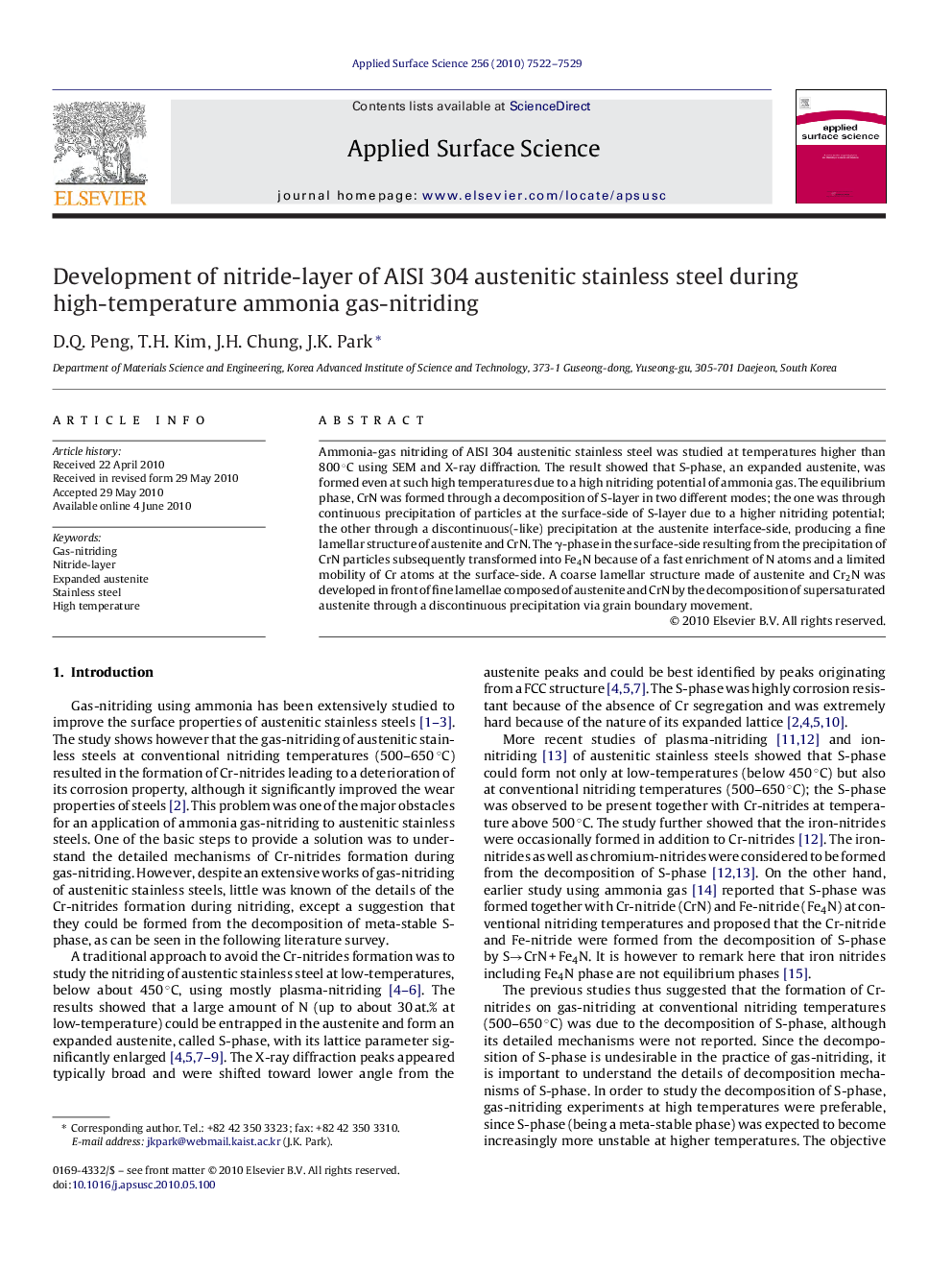| Article ID | Journal | Published Year | Pages | File Type |
|---|---|---|---|---|
| 5362669 | Applied Surface Science | 2010 | 8 Pages |
Abstract
Ammonia-gas nitriding of AISI 304 austenitic stainless steel was studied at temperatures higher than 800 °C using SEM and X-ray diffraction. The result showed that S-phase, an expanded austenite, was formed even at such high temperatures due to a high nitriding potential of ammonia gas. The equilibrium phase, CrN was formed through a decomposition of S-layer in two different modes; the one was through continuous precipitation of particles at the surface-side of S-layer due to a higher nitriding potential; the other through a discontinuous(-like) precipitation at the austenite interface-side, producing a fine lamellar structure of austenite and CrN. The γ-phase in the surface-side resulting from the precipitation of CrN particles subsequently transformed into Fe4N because of a fast enrichment of N atoms and a limited mobility of Cr atoms at the surface-side. A coarse lamellar structure made of austenite and Cr2N was developed in front of fine lamellae composed of austenite and CrN by the decomposition of supersaturated austenite through a discontinuous precipitation via grain boundary movement.
Related Topics
Physical Sciences and Engineering
Chemistry
Physical and Theoretical Chemistry
Authors
D.Q. Peng, T.H. Kim, J.H. Chung, J.K. Park,
